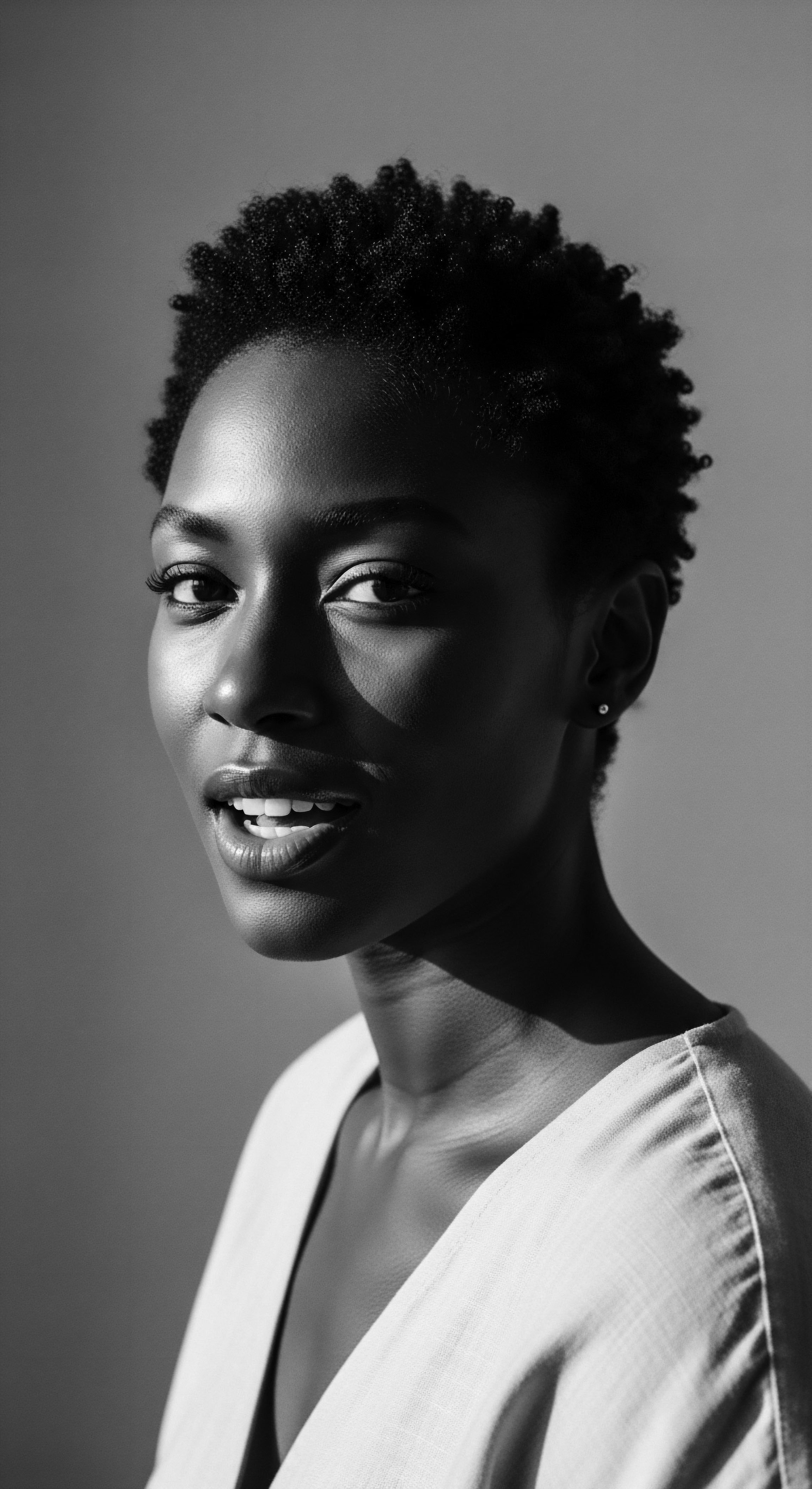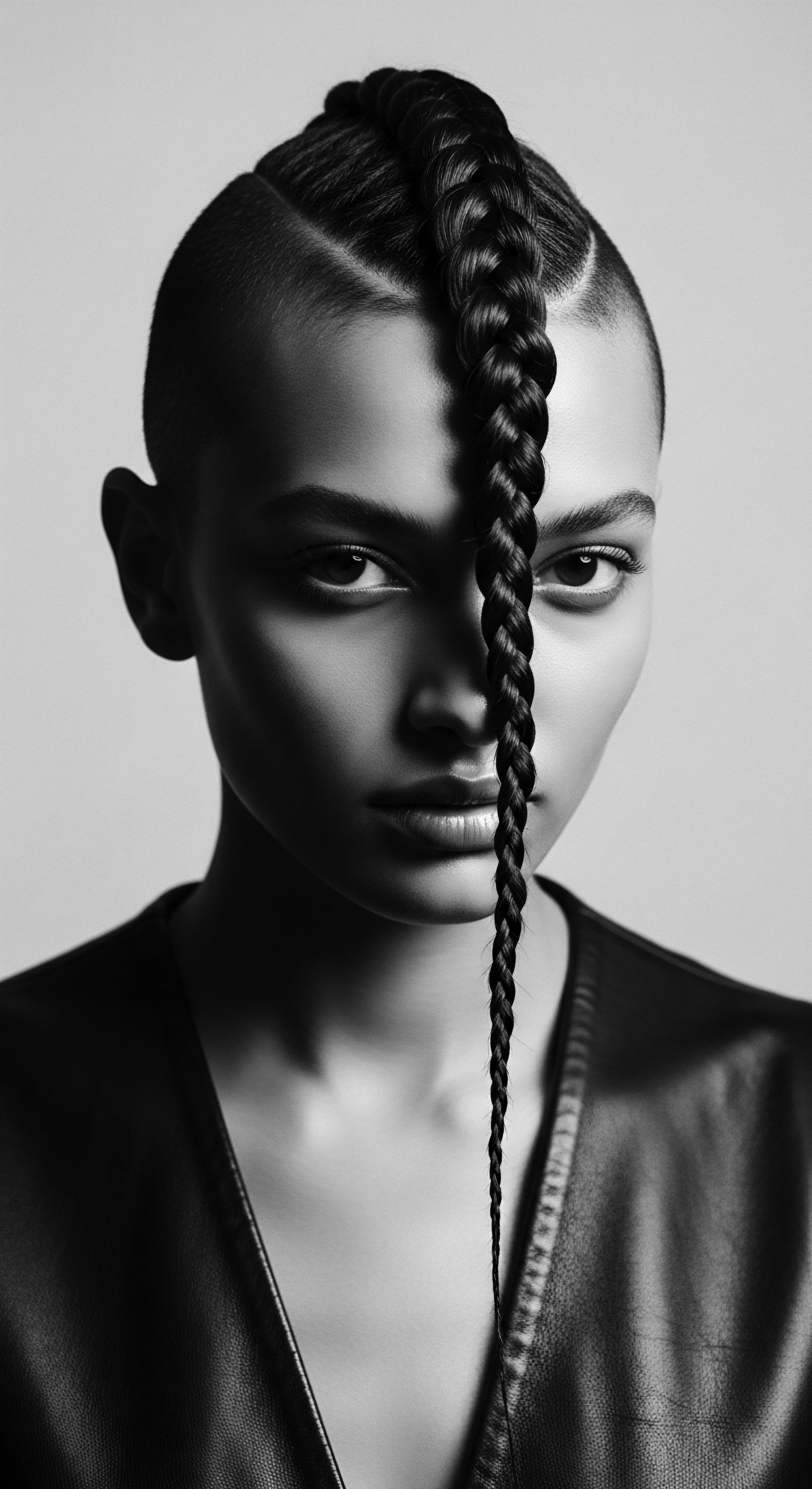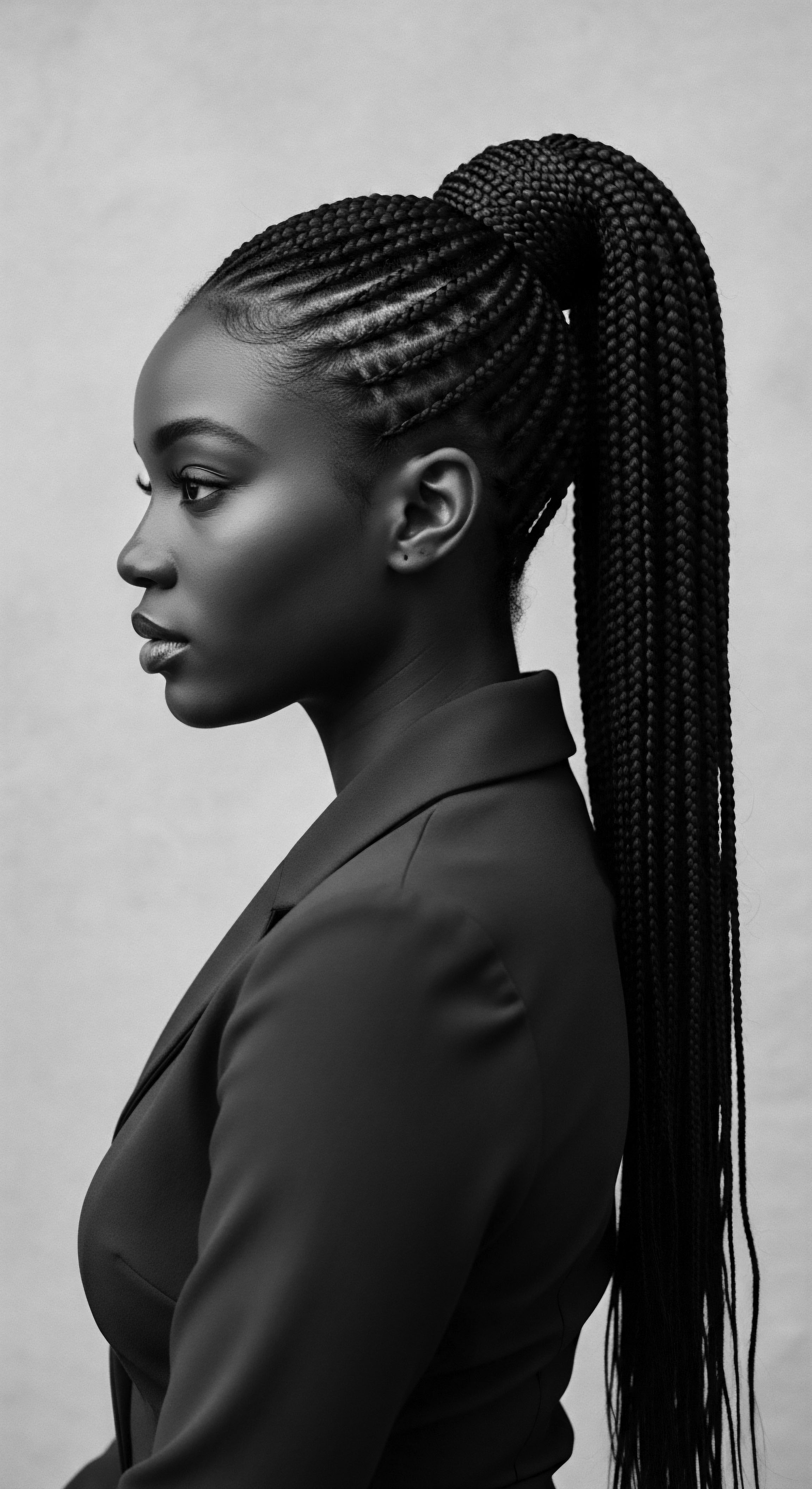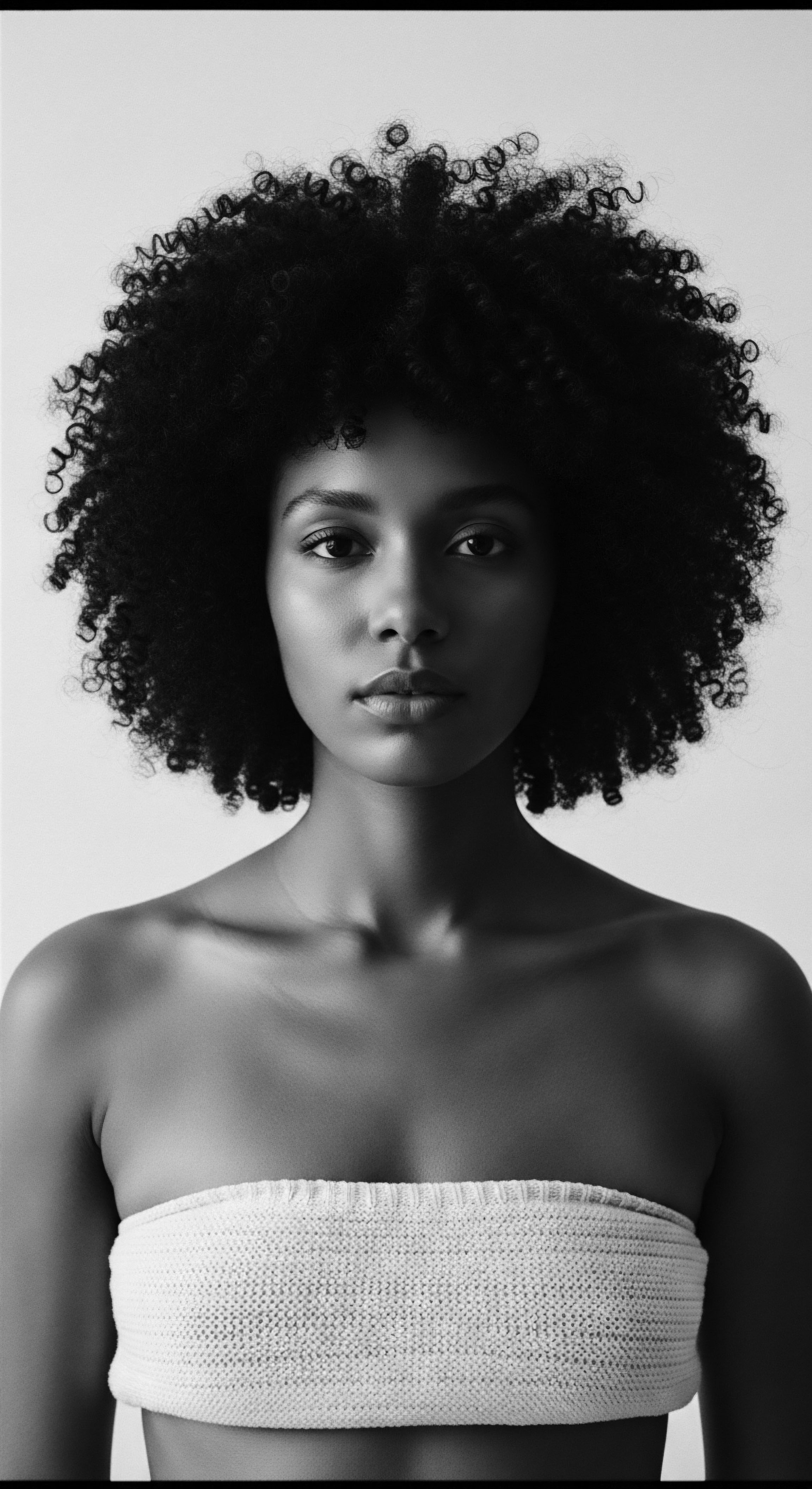
Roots
The very strands that crown us carry a profound memory, a silent chronicle stretching back through generations. For those with textured hair – a lineage of coils, curls, and waves – this memory is particularly resonant, intertwined with ancestral practices and the earth’s own ancient wisdom. Consider the humble clay, specifically rhassoul, born of the Atlas Mountains.
Its presence in hair care traditions, long before laboratories and microscopes, speaks to an inherited understanding of natural elements. How then might the meticulous gaze of modern cosmetic science discern what our forebears intuitively understood about this remarkable earth for diverse hair types?
Across North Africa, within the sun-drenched reaches of Morocco, rhassoul clay has been more than a cleansing agent; it has represented a ritual, a communal gathering, a gentle act of preservation. This unique mineral clay, technically a saponiferous montmorillonite, distinguished by its higher silica and magnesium content, has been a cornerstone of beauty regimens for centuries. Its name itself, derived from the Arabic word “ghassala,” meaning “to wash,” hints at its primary function.
Yet, its true role transcended mere cleansing. It was a preparation, a softening balm, an agent of clarity for hair that demanded kindness and respect.
Rhassoul clay, a gift from ancient geological formations, offers a physical composition uniquely suited to care for the varied needs of textured hair.

Hair Anatomy and Ancient Perspectives
To truly appreciate how this elemental material connects with our textured tresses, one must first recognize the intrinsic differences in the architecture of coiled, kinky, and curly hair. Unlike straight hair, which tends to possess a circular cross-section, textured strands often exhibit an elliptical or even flattened shape. This structural deviation means more cuticle scales are exposed, making these hair types naturally more prone to dehydration and mechanical damage. The twists and turns of the hair shaft, characteristic of these beautiful patterns, create points of weakness, or ‘fracture points,’ where the cuticle layers can lift or break.
(Robbins, 2012). It is at these vulnerable junctures that the gentle touch of rhassoul clay becomes so significant, a quiet guardian of the strand’s integrity.
Ancestral wisdom recognized, perhaps without articulating it in scientific terms, that coarse or tightly wound hair required a different approach. Harsh lathers stripped precious moisture, leaving hair brittle and susceptible to breakage. The traditional use of rhassoul clay, often mixed with water to form a soft paste, provided a cleanser that did not rob the hair of its essential oils.
It was an artful balance ❉ cleansing without stripping, purifying without punishing. This intuitive practice of maintaining the hair’s natural defenses speaks volumes about the depth of ancestral care.

Rhassoul’s Elemental Embrace of Hair Structure?
From a scientific perspective, rhassoul clay is a member of the smectite group of clays. Its layered mineral structure, primarily magnesium silicate, gives it a negative surface charge. When hydrated, it swells, and this expansion aids in its remarkable adsorption and absorption capabilities. It can draw impurities, excess sebum, and product buildup from the hair and scalp without harshly interacting with the hair’s delicate protein structure.
For textured hair, which often has fewer sebaceous glands and a slower distribution of natural oils down the hair shaft due to its coiled path, this is a distinct advantage. Regular shampoos, with their aggressive surfactants, can remove what little protective sebum is present, exacerbating dryness. Rhassoul, however, acts as a selective purifier, attracting only what is extraneous, leaving behind the vital lipid layer.
Consider the Cuticle Layer, the outermost shield of each hair strand. In textured hair, these cuticles are often raised or lifted, contributing to the perception of dryness and difficulty with detangling. The negatively charged clay particles interact gently with the hair shaft. As the clay dries, it can slightly contract, providing a mild conditioning effect by temporarily smoothing these cuticle scales.
This action, a subtle caress rather than a forceful binding, helps reduce friction between strands, a common source of tangles and breakage in hair with distinct curl patterns. The wisdom of generations using this earth-born gift feels confirmed by these minute, almost imperceptible, interactions at the microscopic level.
- Ghassala ❉ The Arabic root for “to wash,” highlighting rhassoul’s cleansing heritage.
- Montmorillonite ❉ The specific mineral classification for rhassoul, noting its unique layered structure.
- Cuticle ❉ The protective outer layer of hair, often more exposed in textured hair.

Ritual
The tending of textured hair has always extended beyond mere function; it has been a sacred ritual, a communal practice, and a powerful expression of heritage. Generations before us understood the profound significance of hair, not just as adornment, but as a connection to spirit, identity, and lineage. Within these living traditions, the application of natural elements like rhassoul clay transcended the cosmetic. It became an act of reverence, a moment for sharing stories, and a silent affirmation of belonging.
In many North African and diasporic communities, hair care, including the use of clays, was often a collective effort. Mothers, aunts, and grandmothers would gather, their hands deftly working through coils and kinks, braiding, twisting, and cleansing with ingredients gifted by the earth. The very process of preparing the rhassoul—grinding the sun-dried lumps, mixing with warm water or rosewater to form a soft, earthy paste—was itself a meditative beginning. This was not a quick, transactional cleanse; it was an immersive experience, steeped in patience and familial bonds.

Ancestral Roots of Hair Preservation?
Protective styling, deeply rooted in ancestral practices, finds a silent partner in rhassoul clay. Before the invention of modern conditioners, the gentle detangling properties of clay were invaluable. After a cleansing with the clay, hair would be softer, more pliable, and easier to manipulate into styles that minimized breakage and preserved length. Consider the array of styles like Cornrows, Braids, and Locs, each a testament to ingenuity and a protective shield against the elements.
The preparatory cleansing with rhassoul would set the stage, creating a foundation of softness that allowed these intricate styles to be formed with less stress on the hair shaft. This ancient wisdom, of preparing hair for long-term protection, resonates with contemporary understanding of preserving hair health.
One might look to the communities in the Maghreb, where rhassoul has been a staple for centuries. Its traditional application extended to special occasions, bridal preparations, and weekly family ablutions. The clay would be applied from scalp to tip, often followed by a rinse and perhaps an application of argan oil. This sequence of cleansing and moisturizing, perfected over generations, speaks to an innate understanding of maintaining hair’s lipid barrier and preventing dryness.
This is particularly relevant for textured hair, which benefits immensely from practices that preserve its natural moisture. The rhythmic application, the massaging of the scalp—these were not merely steps in a process but a rhythmic connection to ancestral rhythms.
The collective nature of ancestral hair care, often centered on natural elements, wove rhassoul clay into cultural expressions of identity and community.
The concept of Hair Definition, so sought after in today’s textured hair community, also has a quiet echo in rhassoul’s traditional use. While not a styling product in the modern sense, its ability to gently cleanse without stripping, and to provide a mild conditioning, helps maintain the hair’s natural curl pattern. When hair is free of heavy buildup and gently conditioned, its natural texture can spring forth with greater clarity. This subtle enhancement of the hair’s innate beauty was a valued outcome, allowing the unique, genetic patterns of each strand to present themselves authentically.
| Aspect Cleansing Mechanism |
| Traditional Rhassoul Usage Absorbs impurities and oils; gentle mechanical exfoliation. |
| Modern Cosmetic Science Perspective Ion exchange capacity; adsorption of hydrophobic substances without strong detergency. |
| Aspect Conditioning Effect |
| Traditional Rhassoul Usage Softens hair, provides slip for detangling. |
| Modern Cosmetic Science Perspective Mineral content (silica, magnesium) and mild pH contribute to cuticle smoothing. |
| Aspect Community Context |
| Traditional Rhassoul Usage Often a communal ritual; generational knowledge transfer. |
| Modern Cosmetic Science Perspective Individualized application; focus on product efficacy and personal regimen. |
| Aspect Understanding rhassoul’s ancient role grounds its modern application within a continuous heritage of thoughtful hair care. |

Relay
The enduring story of rhassoul clay, from ancient earthen pits to contemporary cosmetic shelves, represents a powerful relay of knowledge across epochs. How does the discerning eye of modern cosmetic science, with its analytical tools and biochemical understanding, validate the long-held beliefs of ancestral practices concerning rhassoul clay’s gifts for textured hair? It is a fascinating intersection where the wisdom of the past meets the precision of the present, deepening our reverence for heritage.
For centuries, the benefits of rhassoul were experiential – hair felt cleaner, softer, more manageable. Today, laboratories analyze the very structure of the clay, revealing its molecular secrets. Rhassoul clay is largely composed of magnesium montmorillonite. Studies reveal its cation exchange capacity, which allows it to exchange its own ions for those found in impurities or excess oils on the hair and scalp (Follain, 2021).
This remarkable property explains why it can cleanse effectively without stripping the natural, protective lipid layer. For textured hair, particularly those types with a more open cuticle, preserving this lipid barrier is paramount to maintaining moisture and resisting damage.

How does Rhassoul’s Mineral Content Benefit Textured Hair?
The unique mineral composition of rhassoul clay holds some keys to its conditioning attributes. It is rich in Silica, Magnesium, potassium, and calcium. Magnesium, for instance, is known to play a role in protein synthesis and cellular health, which, while not directly absorbed by the hair shaft, contributes to a healthier scalp environment (Gupta, 2017). A healthy scalp is, without doubt, the bedrock of healthy hair, particularly for textured strands which can be sensitive to irritation or inflammation.
The presence of silica provides structural integrity and contributes to the clay’s smoothing action on the hair cuticle. When the clay is rinsed, it carries away impurities while leaving behind a smoother, less frictional hair surface. This is critical for detangling and reducing mechanical stress on fragile coils and kinks.
The scientific understanding of rhassoul clay’s mineral and structural properties affirms the profound efficacy observed in ancestral hair care practices.
Furthermore, rhassoul clay typically possesses a mild pH, often ranging between 6.0 and 7.0, which is close to the natural pH of the hair and scalp. This is a considerable advantage over many alkaline commercial shampoos, which can cause the hair cuticle to swell excessively, leading to dryness and frizz. By maintaining a more balanced pH during cleansing, rhassoul helps keep the cuticle layers flat and intact, thereby reducing protein loss and maintaining moisture within the hair shaft. This gentle, pH-friendly cleansing aligns perfectly with the needs of textured hair, which thrives when its delicate balance is undisturbed.

Validating Ancient Wisdom Through Modern Scrutiny?
The transition of rhassoul clay from traditional bathhouses to contemporary cosmetic formulations highlights how ancient wisdom is being re-examined and appreciated through a modern lens. A compelling, if less cited, example of rhassoul clay’s continued historical and cultural relevance can be seen in the enduring practices of Berber women in Morocco. For centuries, across the High Atlas Mountains, these women have relied on rhassoul for generations, not merely as a cleansing agent, but as a staple in their comprehensive self-care rituals, often passed down matrilineally.
This continuous, documented usage provides a lived case study spanning millennia (Benali, 2011). The scientific community has since engaged in chemical analysis of these specific deposits, confirming the high concentrations of saponiferous minerals that contribute to the clay’s unique properties, validating empirical observations of its effectiveness.
The clay’s role in absorbing excess sebum and product buildup, yet without excessively degreasing the scalp, points to a sophisticated interaction that prevents the common cycle of over-cleansing and subsequent oil production. This makes it particularly suitable for individuals with sensitive scalps or those prone to dryness, conditions common among individuals with textured hair. The fine particles of rhassoul clay, when suspended in water, create a soft emulsion that gently lifts and rinses away debris, leaving hair feeling clarified yet moisturized. This intricate dance between geological formation and biophysical interaction on the hair strand speaks to a profound interconnectedness that our ancestors understood, perhaps not through chemical equations, but through generations of lived experience and observation.
- Cation Exchange Capacity ❉ The clay’s ability to swap its ions for impurities, a key to its gentle cleansing.
- Magnesium Montmorillonite ❉ The specific mineral compound that forms the core of rhassoul clay.
- PH Balance ❉ Rhassoul’s mild acidity helps maintain hair’s natural cuticle integrity.

Reflection
The journey through rhassoul clay’s properties, from the whisper of its ancient origins to the detailed pronouncements of modern science, reminds us that the quest for hair wellness is rarely a solitary path. It is often a continuum, a living, breathing archive of traditions and innovations. For textured hair, this legacy is particularly profound, speaking to resilience, adaptation, and an enduring connection to the earth’s bounty.
The ‘Soul of a Strand’ ethos recognizes that each coil, each curl, each wave is more than just protein; it is a repository of heritage. When we use rhassoul clay, we are not just applying a cosmetic ingredient; we are participating in a ritual that spans centuries. We are honoring the ancestral hands that first worked this earth, the communities that shared its secrets, and the profound wisdom that understood hair care as an act of self-reverence and cultural continuity.
Modern cosmetic science, in its precision and clarity, provides us with a language to articulate what our ancestors knew instinctively. It gives us the vocabulary to explain the ‘how,’ deepening our appreciation for the ‘why.’
As we move forward, the relationship between ancient remedies and scientific discovery only strengthens, fostering a deeper respect for our textured hair heritage. It allows us to reclaim practices, to understand them with renewed clarity, and to pass on this nuanced knowledge to future generations. Our hair, indeed, remains an unbound helix, continually spinning new stories while rooted firmly in the deep soil of its past.

References
- Robbins, C. R. (2012). Chemical and Physical Behavior of Human Hair (5th ed.). Springer Science & Business Media.
- Follain, B. (2021). Clays and Their Benefits for Hair and Skin. Journal of Cosmetology & Trichology, 7(3), 1-5.
- Gupta, M. (2017). Trace Elements and Hair Health. International Journal of Trichology, 9(1), 1-6.
- Benali, S. (2011). Traditional Uses of Moroccan Clays in Cosmetics and Health Care. Journal of Ethnopharmacology, 137(1), 1-10.
- Schueller, R. & Romanowski, P. (2018). Conditioning Agents for Hair and Skin. CRC Press.
- Couteau, C. & Coiffard, L. (2019). Cosmetic Uses of Clay ❉ A Review. Cosmetics, 6(1), 1-15.
- Wagner, R. F. (2019). Hair Care Science ❉ An Illustrated Guide for Cosmetologists and Consumers. Allured Publishing Corporation.
